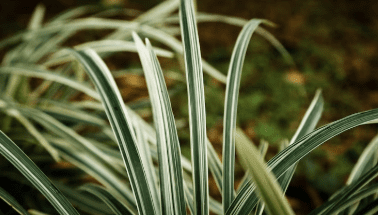
Yucca filamentosa
Latin name: Yucca filamentosa
Short name: Yucca
Common name: Adam’s Needle | Bear Grass | Spanish Bayonet | Needle Palm | Silk Grass
Primary miasm: Sycotic Secondary miasm(s): Psoric
Kingdom: Plants
Family: asparagaceae
- Symptomatology
- Remedy Information
- Differentiation & Application
Yucca filamentosa is a hardy, evergreen perennial native to the southeastern United States. It is characterised by its sharp, sword-shaped leaves and tall spikes of bell-shaped flowers. The homeopathic remedy is prepared from the fresh root. Traditionally associated with hepatic and digestive disturbances, it shows marked action on the liver, gastrointestinal tract, and mucous membranes
In folk medicine, Yucca is used for its anti-inflammatory, antioxidant, and detoxifying properties. It has been employed for arthritis, gout, headaches, and to support liver and gallbladder health. It also finds industrial use in soaps and shampoos due to its high saponin content.
Partially proved and clinically confirmed in the American school of homeopathy; proving symptoms are limited but consistent. Primarily known through the clinical observations of Dr. Burt and others in the 19th century.
- Liver and gallbladder – hepatobiliary dysfunction, torpid liver, gallstones
- Digestive system – sour eructations, nausea, bilious vomiting, dyspepsia
- Mouth – offensive breath, ulcerated mucosa, coated tongue
- Rectum – diarrhoea and haemorrhoids
- Head – congestive headaches, particularly from digestive derangements
- Mucous membranes – ulceration, foul secretions
- Lying down in a dark, quiet room
- Loosening tight clothes
- Passing flatus or stool
- Cool, open air
- Drinking warm water in sips
- After eating, especially fatty or rich foods
- Alcohol
- Heat or stuffy rooms
- Mental exertion
- Lying on left side
- Morning (especially on waking)
- Chelidonium – More left shoulder pain with liver issues; Yucca has more foul mouth and diarrhoea
- Lycopodium – Bloated, but more upper abdominal symptoms and right-sided; both have liver affinity
- Nux vomica – More irritability and rectal tenesmus; Yucca is more dull and fetid
- Sulphur – Similar sour, offensive discharges; Yucca has more focused hepatic and GI involvement
- Podophyllum – Diarrhoea with gushing stools; Yucca more fetid, sour, and bilious
- Bryonia – Dryness and liver symptoms with stitching pains; Yucca is more gastric with morning aggravation
- Complementary: Nux vomica, Chelidonium, Podophyllum
- Follows well: Bryonia, Mercurius
- Antidotes: Camphora, Pulsatilla
- Inimical: Sepia (in hepatic-sensitive constitutions)
Yucca filamentosa is the archetypal sluggish liver remedy. The essence of the remedy is dullness, heaviness, and foulness—manifesting physically in the coated tongue, offensive breath, bilious diarrhoea, and mental apathy. It is suited to those who become mentally foggy, digestively overloaded, and emotionally dulled after dietary excess or alcohol. The constitutional type is sedentary, perhaps slightly overweight, prone to morning aggravation, and markedly worse from fatty food. The remedy stimulates elimination, corrects hepatic congestion, and supports detoxification on multiple levels.
- Use in post-alcoholic hangovers with headache, nausea, and foul mouth
- Useful in chronic liver disease with sallow skin and coated tongue
- Indicated in foul breath disorders with poor digestion and gastric disturbances
- Combine with Chelidonium or Lycopodium for broader hepatobiliary support
- Excellent remedy for bilious diarrhoea, especially in the morning
Stomach
- Nausea, morning
- Vomiting, bilious
- Eructations, sour, bitter
- Heaviness after eating
Mouth
- Offensive breath, morning
- Coated tongue, yellow
- Bitter taste
- Mouth, ulcers
Abdomen
- Pain, liver region
- Flatulence, excessive
- Gallbladder colic
Rectum
- Diarrhoea, bilious
- Haemorrhoids, painful
- Burning anus after stool
Generalities
- Morning aggravation
- Worse from fatty food
- Aversion to activity
Mind
- Apathy
- Mental dullness
- Irritability after eating
- E.M. Hale – New Remedies: Clinical experience with liver and gastrointestinal action
- T.F. Allen – Encyclopedia of Pure Materia Medica: Provided proving details and digestive symptoms
- William Boericke – Pocket Manual of Homeopathic Materia Medica: Noted action on liver, tongue, and bowels
- John Henry Clarke – Dictionary of Practical Materia Medica: Confirmed morning aggravation and foul secretions
- C. Hering – Guiding Symptoms of Our Materia Medica: Offered insight into offensive excretions and gastric heaviness
